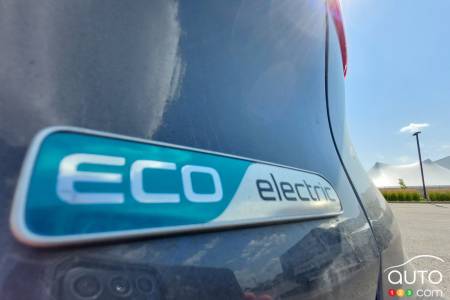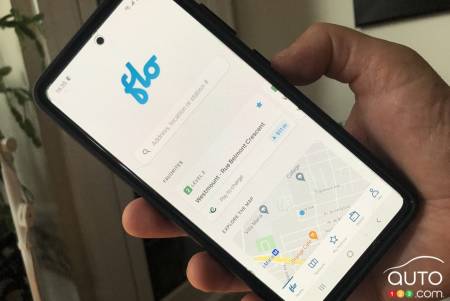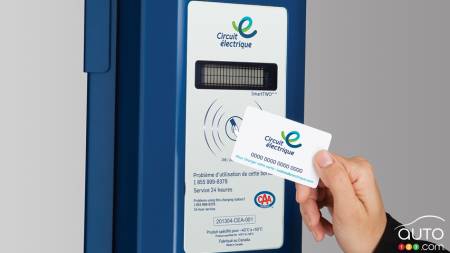Auto123 puts the Kia Niro EV to the long-term test. Today, part 14.
Since the majority of the charging of our Kia Niro EV long-term tester occurs at home, we wanted to look at the costs that Hydro-Québec – in charge of powering my home province - has in store for EV owners.
For those of you in other Canadian provinces, know that there are differences. The Independent Electricity System Operator and BC Hydro are the equivalent of Hydro-Quebec in Ontario and British Columbia, respectively. Across the country, electricity prices vary due to various factors.
Browse cars for sale available near you
Our good fortune
I won't detail all the intricacies of Hydro-Quebec's rates here (a visit to their website will do that better than I can) but I will point out some data that I think is relevant:
- Of the approximately 4.4 million residential and agricultural customers in Quebec, about 3.8 million are entitled to the basic rate called D (as in "Domestic");
- This rate is divided into two price brackets: 6.2 cents for the first 40 kWh used per day, and 9.5 cents thereafter (these prices will increase by 2.6 percent on April 1);
- Even with this increase, these rates will remain the lowest in North America! For example, right now, 1,000 kWh costs $74 in Montreal, $134 in Toronto and $329 in New York. The cost of electricity is even more "shocking" in Europe;
- Not only is electricity sold to us by our government (the only shareholder of Hydro-Quebec since its foundation in 1944) at an advantageous price, it is of course renewable, meaning that its raw material - the water flowing along our rivers - is constantly renewed thanks to rainfall and snowmelt (the harnessing of this energy via hydroelectric dams, however, does generate lively debate, here and elsewhere);
- Those valid ecological ecological debates aside, our electricity is undeniably “cleaner” than that extracted from fossil sources (coal, gas, oil) or nuclear power;
- Since electricity is more expensive elsewhere, its price in many jurisdictions often varies depending on the time of day and night. That isn’t so in my province, but Hydro-Quebec has invited 160,000 consumers to test a “dynamic” pricing system, by which they can save money by not plugging in during certain consumption peaks.
Clearly, Quebecers are spoiled when it comes to electricity. If there's one place in the world where the EV has a natural home, it's here!
Let's not quibble
I have more good news: your electricity bill won't be higher if you charge your EV from a 240V (Level 2) instead of a 120V (Level 1) outlet.
Of course, to access the 240V, you'll have to buy a charging station and pay for its installation, but once you've deducted the subsidies, you'll realize that it was worth it because of the speed of Level 2 charging versus Level 1. As they say, time equals money.
And it's not like charging cost more from a more-powerful charger. “Your meter at home doesn't know the difference between the 120V or 240V circuit. It doesn't care if it's your stove, dryer or charging station that's working. It just adds up the electricity used by all these appliances,” explains Maxence Huard-Lefebvre, spokesperson for Hydro-Quebec.
In fact, other than the modest initial cost, there’s no drawback to having a Level 2 station installed at home.
Ok fine, you say. But give it to us straight. In dollars and cents. Just how much does it cost to charge an EV at home?
According to Maxence, Hydro-Québec experts have estimated that an EV consumes the energy of a water heater every year. But that can vary from home to home, of course. The annual energy cost of a water heater can be anywhere from $200 to $300 per household.
Let's play it conservatively and take the higher figure. For an EV that’s driven 20,000 km per year, and if your home recharges cost about $300 in electricity per year, we can reasonably estimate that each recharge costs $1. How’s that compared to filling up at the pump at $2 per litre?

Away from home
Now, what about when you use public charging stations?
Let's take the example of the Electric Circuit, Hydro-Quebec's wide-ranging network that covers most of la Belle Province and stretches into eastern Ontario. Keep in mind that prices include taxes and are of course subject to change.
Charging at FT Level 2 (7 kW) stations is charged at a flat rate of either $2.50, regardless of the length of the charge, or $1/hr, calculated to the minute as long as the vehicle is connected.
For Level 3 fast charging stations, as of February 1st, here are the rates:
- 7.21/hr at 24-kW charging stations
- 12.39/hr at 50-kW charging stations for a battery charge level below 90 percent.
- 15.27/hr to $35.79/hr at 100-kW charging stations, with rates varying according to the power level reached during charging. And here’s a tip: monitor the charging progress on your smartphone’s app and stop charging when the charge reaches 80 percent. Why? Because beyond that point, charging slows down considerably and the bill explodes! From then, you’re paying more for less charge. Here, time is literally money.
- 35.79 at charging stations over 100 kW
All recharges at fast stations are charged by the second. In Ontario, the price of charging at the Electric Circuit's Level 2 and 50-kW fast charging stations varies from location to location.
In theory, if you request to start a charge through the 24/7 hotline (provided by CAA-Quebec), a $5 charge is added to your bill. In practice, when I had trouble connecting at a COE station, a CAA agent started the charging process for me and I was never charged the fee.
Anyway, to avoid all the extra charges that might give you a "shock" to the system, download the Electric Circuit app or, better yet, get a membership card ($15 plus tax).
The membership card will identify you as a user of the Electric Circuit and, like a credit card, it will dispense the funds you have deposited in your account.
The Roulons électrique website estimated for us the annual charging cost of our 2020 Niro EV using the combined city/highway consumption rating of 18.6kWh/100 km calculated by Natural Resources Canada (we'll come back to this in another entry) and assuming that 85 percent of the charging takes place at home ($316), 5 percent with a Level 2 public charging station ($28) and 10 percent with a 50 kW Level 3 ($115).
Total annual cost of electricity: $459 to drive 20,000 km (for comparison: $467 for a Nissan Leaf and $679 for a Jaguar I-Pace).
Oh - that $2 a litre for gas we mentioned? With a 60-litre tank, and you filling up, say, three times a month, that works out to roughly $4,300 in a year. See the difference?

Several providers
The Electric Circuit does not have a monopoly on charging stations. Large-scale providers like FLO, EVduty, ChargePoint and Petro-Canada, to name a few, are also active in Quebec, not to mention the rest of Canada and even across the continent.
Each of these providers detail their pricing on their website. You can guess, as I did, that all of them are trying to be competitive. If you ever encounter slightly higher costs, chances are they are because you’re in a more remote geographic location, or perhaps there’s a third party (such as the owner of the site where the terminal is located) claiming their share.
Several of these providers work together as part of a network. The FLO network, for one, is very closely connected to the one belonging to the Electric Circuit. That means the membership card of one network works for the other, and vice versa. That's just as true with other networks like ChargePoint and Greenlots.
“Our mission is to make life easy and fluid for EV drivers, who are basically pioneers. We want them to avoid having to download eight different applications," says Sylvain Bouffard, director of communications and public affairs at AddÉnergie, the owner of FLO.
The key word here is interoperability. According to Sylvain, this is the future: “Suppliers are already partnering up to share their infrastructure and technologies.” Even EV manufacturers are participating in this move toward user-friendliness, such as General Motors and its Ultium Charge 360 app, which connects 60,000 charging stations from different providers across the continent. Call it the anti-Apple approach…
Specifications sheet of KIA Niro EV
See also: Kia Niro EV Long-Term Review, Part 1: The carmaker, the reviewer and the (young) enthusiast
See also: Kia Niro EV Long-Term Review, Part 2: Electric cars, a new idea with a long history
See also: Kia Niro EV Long-Term Review, Part 4: Getting a charge out of charging
See also: Kia Niro EV Long-Term Review, Part 5: Many kilometres, many questions
See also: Kia Niro EV Long-Term Review, Part 6: When the computer decides things, without consulting us
See also: Kia Niro EV Long-Term Review, Part 7: Off to Join the Electric Circuit
See also: Kia Niro EV Long-Term Review, Part 8: The Benediction
See also: Kia Niro EV Long-Term Review, Part 9: Beating the Cold
See also: Kia Niro EV Long-Term Review, Part 10: Let’s Talk Maintenance
See also: Kia Niro EV Long-Term Review, Part 11: Questions… and Answers
See also: Kia Niro EV Long-Term Review, Part 12: All About Nozzles
See also: Kia Niro EV Long-Term Review, Part 13: Station to Station



